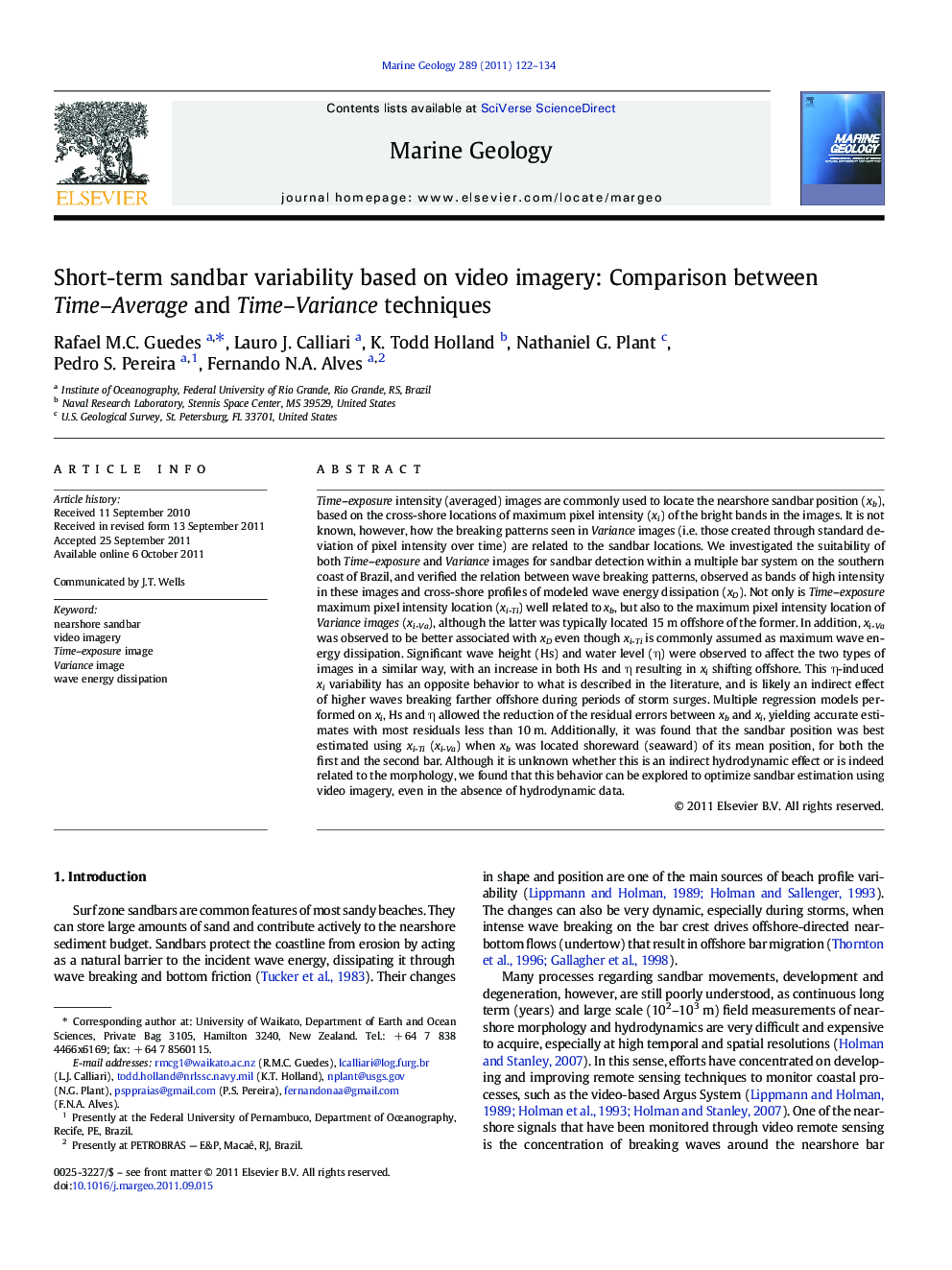| Article ID | Journal | Published Year | Pages | File Type |
|---|---|---|---|---|
| 4718688 | Marine Geology | 2011 | 13 Pages |
Time–exposure intensity (averaged) images are commonly used to locate the nearshore sandbar position (xb), based on the cross-shore locations of maximum pixel intensity (xi) of the bright bands in the images. It is not known, however, how the breaking patterns seen in Variance images (i.e. those created through standard deviation of pixel intensity over time) are related to the sandbar locations. We investigated the suitability of both Time–exposure and Variance images for sandbar detection within a multiple bar system on the southern coast of Brazil, and verified the relation between wave breaking patterns, observed as bands of high intensity in these images and cross-shore profiles of modeled wave energy dissipation (xD). Not only is Time–exposure maximum pixel intensity location (xi-Ti) well related to xb, but also to the maximum pixel intensity location of Variance images (xi-Va), although the latter was typically located 15 m offshore of the former. In addition, xi-Va was observed to be better associated with xD even though xi-Ti is commonly assumed as maximum wave energy dissipation. Significant wave height (Hs) and water level (η) were observed to affect the two types of images in a similar way, with an increase in both Hs and η resulting in xi shifting offshore. This η-induced xi variability has an opposite behavior to what is described in the literature, and is likely an indirect effect of higher waves breaking farther offshore during periods of storm surges. Multiple regression models performed on xi, Hs and η allowed the reduction of the residual errors between xb and xi, yielding accurate estimates with most residuals less than 10 m. Additionally, it was found that the sandbar position was best estimated using xi-Ti (xi-Va) when xb was located shoreward (seaward) of its mean position, for both the first and the second bar. Although it is unknown whether this is an indirect hydrodynamic effect or is indeed related to the morphology, we found that this behavior can be explored to optimize sandbar estimation using video imagery, even in the absence of hydrodynamic data.
► We examine the suitability of Timex and Variance images to image sandbar location. ► Intensity maxima on both images were highly associated with the sandbar locations. ► Intensity maxima on Variance images were located offshore of those on Timex images. ► Variance intensity maxima were associated with region where largest waves broke. ► Changes in hydrodynamic parameters affected both types of images in a similar way.
